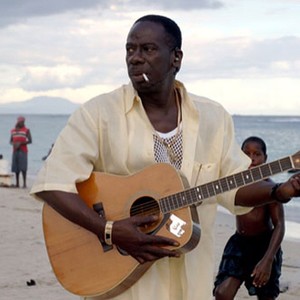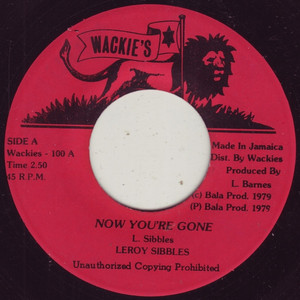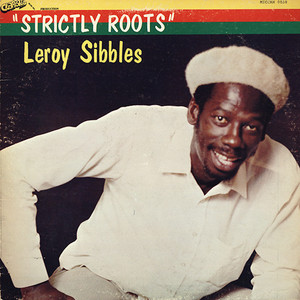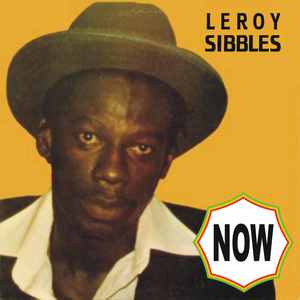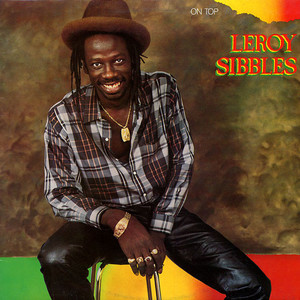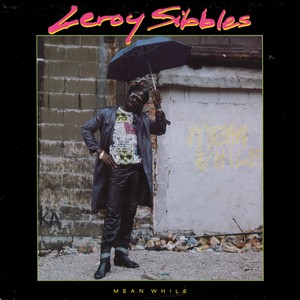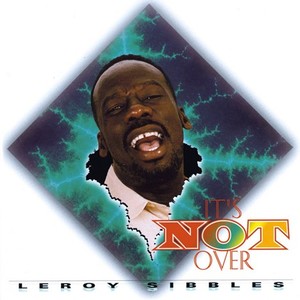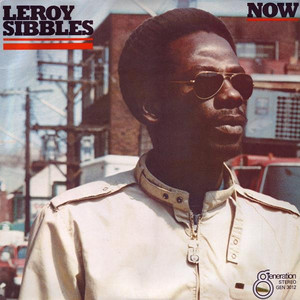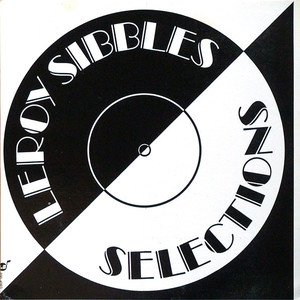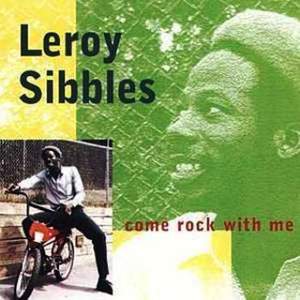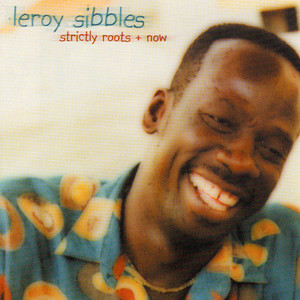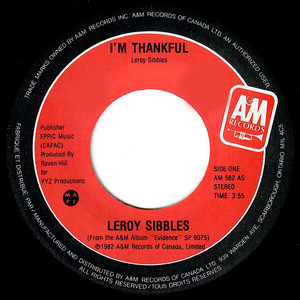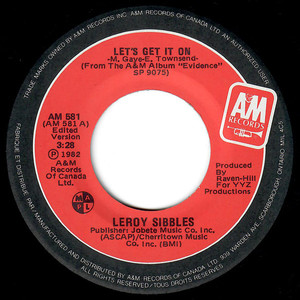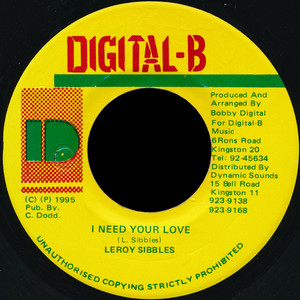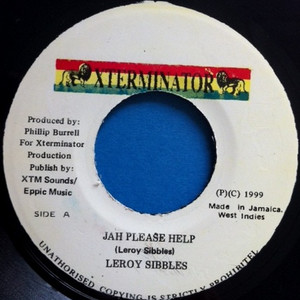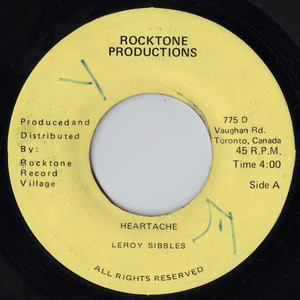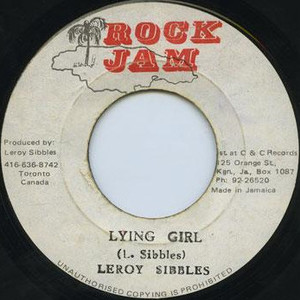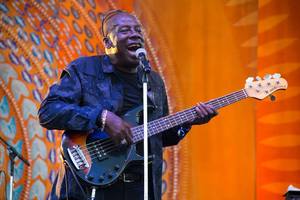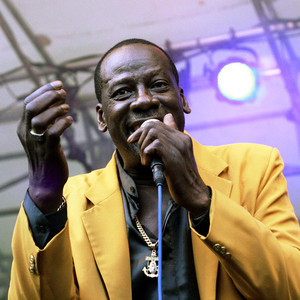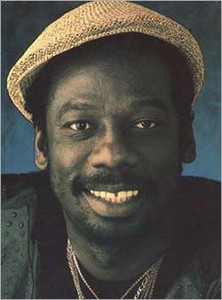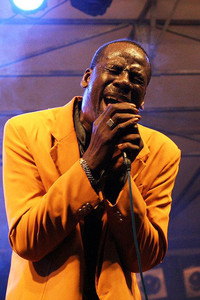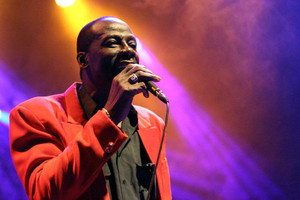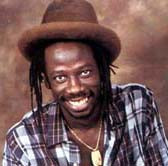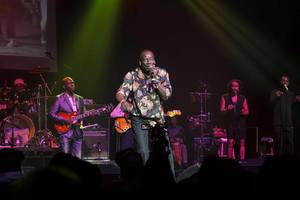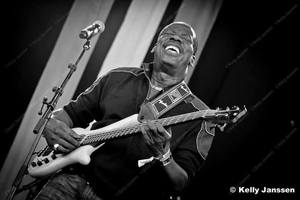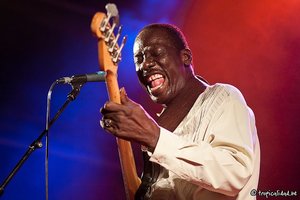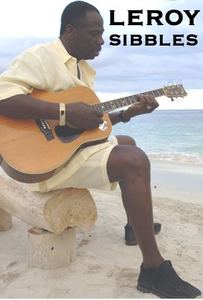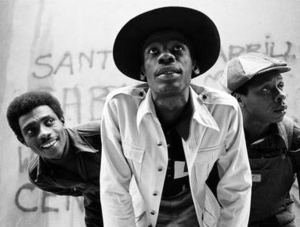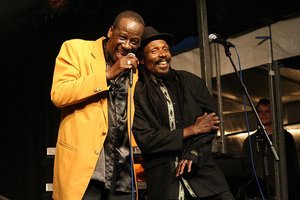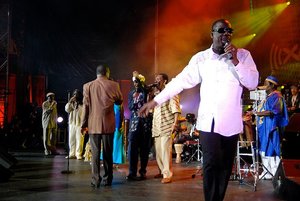Sibbles, Leroy
Websites:
https://www.leroysibbles.com/
Origin:
Montego Bay, Jamaica - Toronto, Ontario, 🇨🇦
Biography:
Little examination of Jamaican popular music is necessary to reveal the creativity of Leroy Sibbles. The charismatic singer, bass player, arranger, and songwriter is best known for his work as lead vocalist of The Heptones, but a closer look at his session career reveals an enormous contribution to the feel and direction of Jamaican music through one of its most creative eras.
As ska slowed to rock steady in the mid to late 1960s, Sibbles occupied a key position at the 13 Brentford Road studio of Clement “Coxson” Dodd. In addition to his work with The Heptones, Sibbles was a session bassist and arranger at Studio One during a time that much of Jamaica’s most enduring popular music was recorded.
Sibbles and Heptones’ co-founders Barry Llewellyn and Earl Morgan met in the mid 1960s, around the time Sibbles’ first group auditioned for Duke Reid’s Treasure Isle studio. Reid declined the opportunity to record that group. Llewllyn and Morgan recruited Sibbles and formed the Heptones, and Ken Lack of Caltone accepted the trio was accepted for a session. Sibbles describes the initial chemistry of the three singers. “It’s a spiritual thing . . . cause is not nothing that was planned that we said ‘this is exactly what we wanted.’ We came from Trenchtown. As kids growing up, the direction was there for us. It happened. Like magic. It was nothing that we studied . . . When we get together, that magic always comes about.” The trio’s initial recordings for Lack were “School Girls” and “Gun Man Coming to Town.” Though the songs didn’t achieve hit status, the latter composition made the playlists at Radio Jamaica Rediffusion (RJR) and fueled the trio’s determination.
In the early years, Sibbles was arc welding during the day and managed to buy a guitar with the money he saved. “The guys were still doing their day jobs, and I stayed home and start writing almost every night. I was writing and arranging, and I loved it. Putting all those ideas [that] I didn’t know I had in me — just pouring out like water. Everyday I wrote a new song and every night the guys would come to rehearse . . . I started picking up [guitar] lessons from this Rastaman named Huntly, he was the first to show me the scales, and [I] started [to] learn chords and positions. I was so hungry to learn . . . The more I learned, the bigger songs I could write. The whole thing was a new life, a new world . . . Everywhere you saw me I had my guitar back then. I wouldn’t go nowhere without it. I would be writing songs, and inspiration would be flowing like water, anywhere — daytime, nighttime, wherever I am.”
The Heptones were among the most prolific and influential groups of the rock steady era, along with the Pioneers, Gaylads, Paragons, Hamlins, Uniques, and Techniques. Signature Heptones songs included “Baby,” “Get In The Groove,” “Ting A Ling,” “Fattie Fattie,” “Got To Fight On (To The Top),” “Party Time,” and “Sweeting Talking.” The group’s Studio One output has been collected on albums The Heptones, On Top, Ting A Ling, Freedom Line, and the more recent Heartbeat anthology, Sea of Love.
In retrospect, Sibbles regards the Heptones’ album On Top among his best work. “On Top pleases me very much. It is a work that I am really satisfied with a song called ‘Love Me Girl,’ I like that. And another called ‘Guiding Star.’ The other song that I like from the On Top album is called ‘Pure Sorrow.’ I like the progression in that song.”
The transition from the blazing rhythms of ska to its mellower offspring, rock steady, was one of the most important changes in the history of Jamaican popular music. Rock steady was characterized by several elements. Most prominent was the drop of snare drum on the third beat of the measure (which would also be found in reggae). Rock steady adapted from ska a rhythmic emphasis on every upbeat, but the rhythm guitarist played this part instead of a saxophonist. Rock steady was more rigid than later reggae, which would readapt some of the looser polyrhythmic characteristics of Jamaican mento, particularly the use of triplets. The “big band” horn melodies of ska were broken down to sax and trombone for rock steady but remained an essential melodic component of the music. Sweet vocal harmonies like those of the Heptones, influenced by North American soul and rhythm & blues, were also key ingredients.
Leroy recalls how the Heptones fit into the musical landscape of the period. “When we were listening as kids to music, it was ska. Bob Marley was doing ska. Toots & the Maytals, Delroy Wilson was doing ska. Even as a kid . . . I was singing some Delroy Wilson songs, which was really up-tempo . . . Then, when we got together, our kind of music was much slower than the ska thing. I would not say that the Heptones were the ones who changed the music, but we know that we were responsible for the change too. Because when we started, we started with songs like ‘A Change Has Got To Come.’ And it was much slower than what was happening. We were a part of the change for sure. We started doing songs like ‘Ting A Ling A Ling,’ and dem songs deh.”
Sibbles retains fond memories of the time The Heptones first tasted success. “We felt that we were a part of something. And that felt really good. We had a purpose in the world. That was one of the greatest things, the greatest feelings. We were somebody . . . We had a say for once in our lives. And that was the most important thing. We weren’t even thinking of money. When we did these songs, . . . and we see how people respond in our community all around us. That was the most important thing. ”
The first time I heard my song on the radio was the thrill of my life . . . I run out of my yard down the lane. ‘Listen! That’s me!’ Yeah, like ‘the British are coming,'” recalls Sibbles.
Beyond his work as a singer/songwriter, Sibbles’ contribution as a bass player to the collective output and enduring legacy of Studio One is perhaps his greatest achievement. Sibbles was encouraged to learn the bass by Jamaican musical giant and Studio One keyboardist/arranger Jackie Mittoo, who needed a bass player for live performances of a lounge trio.
When Mittoo left full time duties at Studio One, Sibbles arranged sessions, sang harmony, and played bass as a part of the studio crew variously known as the Soul Vendors or Sound Dimension. These musicians, with the notable aid of engineer Sylvan Morris, dropped their rhythms behind vocalists Bob Andy, Alton Ellis, Horace Andy, Carlton Manning, The Abyssinians, The Gladiators, Willi Williams, Ken Boothe, John Holt, Burning Spear, Dennis Brown, Slim Smith, and scores of others. Sibbles was a key contributor to tracks like Roy Richards’ “Freedom Blues,” “Love Me Forever” by Carlton & The Shoes, “Satta Amassaganna” and “Declaration of Rights” by the Abyssinians, “Stars” and “Queen of the Minstrel” by Cornell Campbell, “Ten To One” by the Mad Lads, “Door Peep” by Burning Spear, and instrumentals like “Real Rock” and “Full Up.”
Because of the Jamaican process of versioning and the liberal recycling of rhythms in subsequent years, many of the songs, rhythms, and melodies written and recorded during the rock steady era continued to adorn the sound of Jamaican music for the next 30 years. The best known of all of Sibbles’ collaborations is probably the instrumental “Full Up,” popularized internationally by Musical Youth’s recording of “Pass the Dutchie,” an adaptation of the Mighty Diamonds’ “Pass the Kutchie.” Sibbles’ legacy also endures in Horace Andy’s tribute to him, “Mr. Bassie.” Also well known is the ubiquitous “Real Rock” instrumental, later voiced by Willi Williams as “Armagideon Time” and internationalized by the Clash.
The bass parts Sibbles and others developed in rock steady utilized a rhythmic space found in later roots reggae, where the notes weren’t necessarily played or sustained on each downbeat of a 4/4 measure. But Sibbles further differentiates his style from his bass playing contemporaries like Jackie Jackson, Boris Gardiner, and Aston Barrett. “When I started playing professionally, I created my style. I realized that most musicians start before the [down] beat or on the beat. So I created a thing after the beat. And that took off, and right now it makes me stand out in the history of reggae music as a bass man.”
Other musicians involved in the Studio One rock steady sessions included Richard Ace on keyboards; Bunny Williams, Joe Isaacs, and Fil Callendar on drums; Eric Frater and Ernest Ranglin on guitar, and the often underappreciated horn section of Felix “Deadley Headley” Bennett on saxophone and Vin Gordon (a.k.a. “Don D. Jr.”) on trombone.
Controversy over Dodd’s contribution to the musical product at Studio One will continue forever, but predictably, Sibbles corroborates the claims of his colleagues that Dodd’s role was generally limited to the business side of the operation. “Coxson is known all over the world as the producer. [But] we [studio musicians] were producing the songs. Coxson was the executive producer. That’s what Coxson is . . . [Dodd] don’t know a G note from a F note. He can’t identify a musical instrument’s chord or key, or nothing like that. But he has the studio, and he has the finance to do it, so that makes him an executive. The producer is the guy who sits inside and . . . gets into his soul to find the right thing, or the thing that works.
“That’s the only part of [the Studio One experience] that bugs me. Because that is the inspiration that God gave me, for me to live off too.”
After growing frustrated from high demands and lack of remuneration at Studio One, Sibbles and the Heptones recorded for other producers including Lee Perry, Harry Johnson, JoJo HooKim, Niney The Observer, Clive Chin, Gussie Clarke, Lloyd Campbell, Prince Buster, Ossie Hibbert, Phil Pratt, Harry Mudie, Geoffrey Chung, Danny Holloway, Rupie Edwards, and Joe Gibbs. Sibbles recalls his association with Joe Gibbs with some irritation. “I’m the first person who ever helped Joe Gibbs in the music business. Joe Gibbs came to town, to Kingston, and opened a little electronic shop, repairing transistor radios and stuff. That is what he started out doing. He had a little shop downtown [on] Parade. And he met me, and he wanted us to go into the recording business. And he got this little singer called Errol Dunkley, who sings ‘every man does his thing a little way different.’ Then Joe Gibbs called me, and I would sit down with Errol Dunkley and work the songs out to get them ready for recording, with my little box guitar. And I would straighten these songs out for nothing at all, free of cost.”
Other Heptones releases from the early ’70s were Book of Rules (Trojan) and the lesser-known Harry Johnson-produced album Cool Rasta (Trojan), recorded just before the group benefited from the internationalization of reggae via Island Records. The Danny Holloway-produced Night Food and Lee “Scratch” Perry-produced Party Time were the fruit of the association with Island. Sibbles left the Heptones from 1977 to 1995.
As a solo artist, Sibbles worked with Lloyd “Bullwackie” Barnes, Lloyd Parks, Sly & Robbie, Augustus Pablo, and Lee Perry, but primarily produced himself. Sibbles moved to Canada in 1973 and became a sizable pop reggae star, but he feels in retrospect he lost touch with the currency of Jamaican music. “I think that [moving to Canada] was the worst thing that I ever did, because I just went so far and couldn’t go no further there. I was trying my best to keep up as much as I could, but I lost touch with what was happening here in Jamaica.” In Canada, Sibbles won a Juno award, recorded an album for A&M and cut several good albums for Pete Weston’s Micron label. These include one of his best albums, Strictly Roots, a heavy drum & bass workout backed by the Roots Radics.
In recent years Sibbles has been working on new material at his studio in Kingston. He’s also producing for popular artists, up and coming lyricists, and composing new songs. In the near future, he plans to release more original material.
Despite his ambivalence about certain aspects of his career, Sibbles has always felt that music is his raison d’etre. “After a while one day I sat down and said ‘my God this was my destiny,’ ya’know this music thing and what ever power it was, was showing it to me all the time from when I was a kid . . . it took me all my lifetime to realize that, yeah mon. I realize I was made for this.
“When I was from about nine years old, I used to have a vision. When I sleep at night, I used to see myself float off the ground to the height of a telephone pole. I was floating . . . and a crowd would gather and would be pointing up at me. And I’d be looking down at them . . . and that vision used to haunt me. And I could never understand what that meant. And it was . . . while I was living in Canada, . . . the [vision] start coming back to me again. “And it hit me one day, and you know what I saw out of that vision? Myself on stage . . . I’m telling you . . . I was made for this . . . And no matter where I go in the world, whenever I sing for people, they understand, they love it, and it comes naturally.”
-Carter Van Pelt
